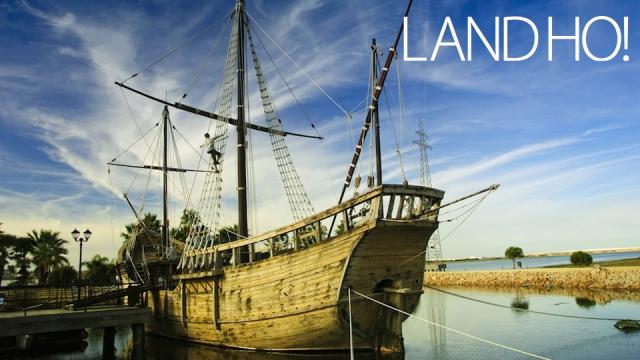Christopher Columbus was kind of a bastard. Still, here we are 519 years later celebrating his accidental discovery of San Salvador. So in honour of navigation and discovery — things that actually deserve adulation — here are six awesome nautical exploration tools, past and present.
Nautical Quadrant
The quadrant, sextant and astrolabe wer the most prominent navigation tools of Columbus and the sailors who followed him during the Age of Discovery in the 16th and 17th centuries. When using the quadrant, sailors would locate the North Star with the viewfinder, and a weighted string would align itself with a degree marking telling you the angle between the star and the horizon. The sextant used an adjustable dial, as opposed to string, but ultimately, they all provided a working latitude for sailors. $US175.
Lunar Calendar App
Christopher Columbus used his knowledge of lunar cycles to trick natives on San Salvador into giving him food and shelter. They believed he could make the moon disappear forever and cause doom and destruction. Columbus got real lucky and his bluff worked. Maybe you can use the lunar calendar for something less malevolent, like learning the position of the moon so that you can better use your sextant. $US1.[imgclear]
Lodestone Compass
Allegedly used by the Olmec in Central America around 1000BC, the Lodestone is one of the earliest known navigation tools due to its natural magnetic properties, which it gains from being struck by lightning. The Chinese also used the lodestone compass a thousand years later, along with early nautical travellers. $US30.[imgclear]
Garmin Nautical GPS
Today, there is navigational technology that is easier to use and more accurate than what Columbus used in his day. It’s called GPS, and Garmin makes a handheld unit designed with sailors in mind. It beats going blind trying to stare at the sun all the time, amiright? Oh, and it FLOATS. $US550.[imgclear]
Norcross Depth Sounder
Putting the concept of echolocation to use, depth sounders help alert today’s sailors if they’re getting too close to a coastline or any other solid mass. This is especially handy when you’re navigating in the dark. $US92.[imgclear]
Hour Glass
Know how sailors in Columbus’ era knew what time it was? A sand glass. Tip it over and every 30 minutes it would empty all the sand from the top chamber into the bottom one. $US70.
